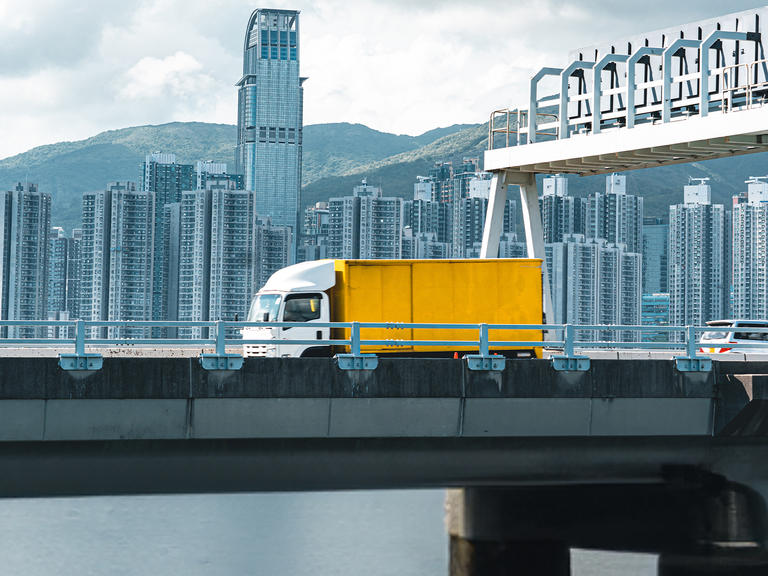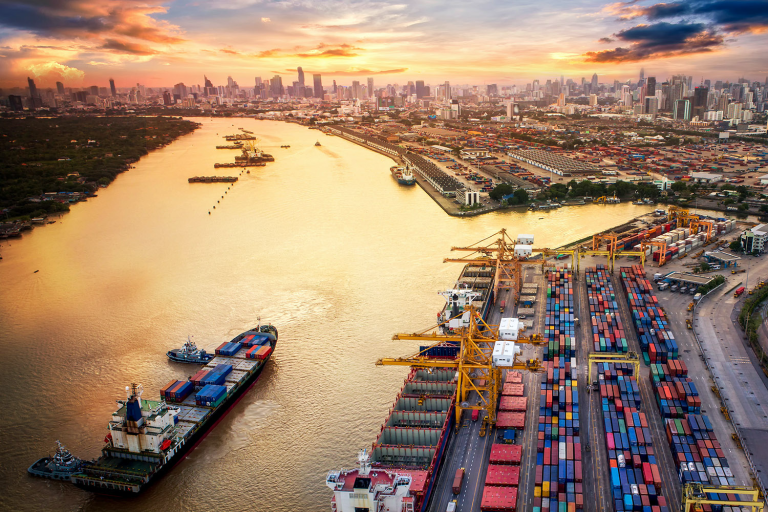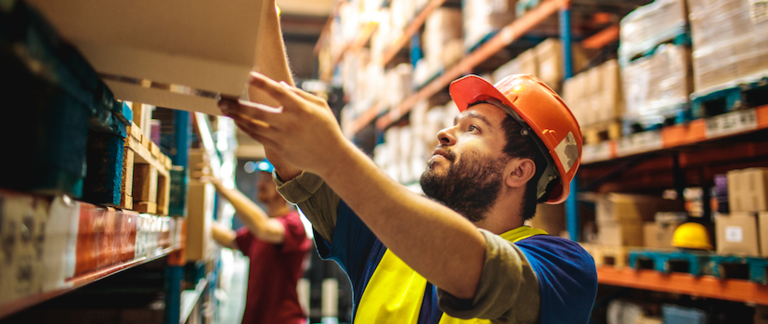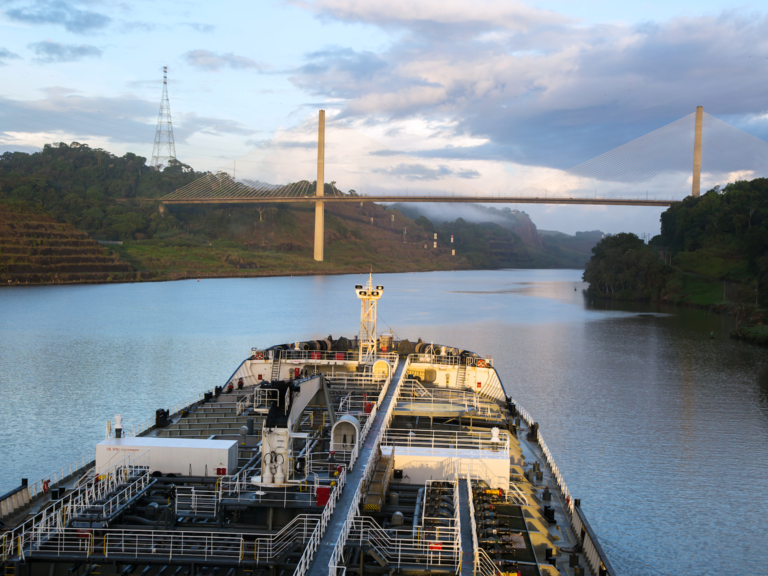Supply chain shifts: what's next for logistics in Asia

Jason Jameson, HERE SVP and General Manager for APAC, explains what our report APAC On The Move has revealed about supply chains.
With some of the world's most important ports and airports, as well as key manufacturing zones, the Asia-Pacific region (APAC) is a critical hub for global supply chains. It is expected to contribute to 50% of the world's trade growth by 2030.
The transportation and logistics industry in APAC is a dynamic and complex landscape, with changes driven by this economic growth, as well as increasing consumer demands and technological advances.
We recently surveyed 1,300 logistics businesses across APAC and captured the findings in our report, APAC On The Move, which helps shed some light on the challenges companies in the industry are facing. We have used the information we gathered to identify opportunities for organizations to drive efficiency, become more connected and safer, and maximize customer satisfaction.

What we found
Rapid modernization in APAC, including the widespread adoption of mobile-based technologies, has driven high levels of competition in the industry. With more than a third of the world's population living in APAC, the region consists of very different cultures, currencies, government regulation and policies, creating a degree of fragmentation and a myriad of complexities.
Consumers expect seamless delivery experiences, including real-time updates and accurate delivery time estimates. For the logistics industry, one of the best ways to address these challenges is through better supply chain visibility.
End-to-end supply chain visibility remains elusive for many in APAC due to difficulties in implementing and integrating the right technology. Almost half of the companies we spoke to rely on manual inputs for portions of the asset tracking and shipment monitoring they do. And that's having an impact on visibility.
The report shows some big disparities between different territories. Almost 70% of companies in Japan are leveraging real-time tracking with no manual inputs. Over 60% of Chinese logistics firms are using asset tracking and shipment monitoring software with no manual inputs to track assets and shipments and cargo. On the other hand, almost 10% of Indian firms are entirely reliant on manual processes.
The ideal state is not only using a system to automate supply chain visibility, but being able to react to events as they happen and respond to dynamic changes. These benefits are best realized when organizations use a location technology-based solution.
Companies that are innovating and adding location as another dimension are better able to optimize and improve visibility, which drives higher customer satisfaction. From an operations standpoint, integration of location technology can help optimize the number of delivery vehicles on the road at any given time, while maximizing the number of parcels delivered per driver per day, resulting in significant cost savings.
One advantage of adding location to the mix is that it can help make inexperienced drivers more effective. We have found from work with our customers that new drivers are often only 40% as productive as experienced ones. With location technology providing automated tour planning and routing, new drivers can be up to 90% as productive as experienced drivers.
Another example where location technology provides a key benefit is in relation to regulatory compliance. In Japan, there is a regulation coming into force in 2024 that will manage driver hours far more stringently.
For this legislation to be implemented effectively, companies will need to monitor and enforce constraints on driver hours. The use of location technology can increase the productivity of drivers within limited driver hours, so companies can avoid incurring extra costs. Otherwise, enterprises could potentially feel forced to pass on these extra costs to the end consumer.

What is holding logistics firms back?
One of the biggest barriers for companies looking to implement logistics solutions is finding the right partners and suppliers to work with. In our report, 52% said this was one of the key issues for them. Integrating the technology solution with their existing software and systems was also a problem for 52% of those surveyed.
Next is how long it takes, at 39%, and the cost, also at 39%. We can summarize the key questions as: Who is the right partner? Can I make it work in my environment? Can I do it fast enough for me? And can I do it at a price that's compelling?
There are some regional nuances — in Singapore, the main obstacle is the cost of implementation, in Indonesia, it is a lack of skills — but the data clearly shows solution integration is undoubtedly a significant hurdle.
If we look at integrated supply chain visibility as the big challenge, we can see that what is happening in the industry is piecemeal optimization. There are automated tools for dispatch or last-mile delivery, and automated warehouse management tools, but what is missing is an end-to-end integration to glue it all together. That is where it is essential to have the right partner who can help define where the benefits can come from, quickly iterate on a prototype and then build and deploy a solution.
International supply chains require multimodal shipping across many different countries and cultures, with diverse modes of transportation. One of the frustrations that companies and customers have is getting an accurate ETA for their goods.
To do this successfully, companies need some historical data to understand what the average cycle time is and be able to look at where they can further optimize. AI and machine learning will also play a role in improving many parts of the supply chain. But it is with the end-to-end view of the supply chain, with location technology at its heart, that companies will really get the benefits.

Getting ahead with location
Location makes a lot of things possible if you are working in the logistics industry. You can increase fleet utilization through advanced planning, and that will lower operation costs. You can calculate accurate ETAs and improve on-time performance, deploying dynamic route optimization that includes weather and traffic information.
You get better utilization of assets and tracking of inventory for end-to-end multimodal visibility with location technology. We work with a supplier of pallets, and they have saved 10% of their costs by tracking them using HERE Positioning, so they can be shared and reused. It can also improve driver safety and retention because you can manage deliveries within allowable hours and simplify the driver's workload. The system automatically generates routes, reconfiguring and reprioritizing as new information becomes available.
Nearly half of those we surveyed — 48% — said they want to increase customer satisfaction and that is their motivation for investment in new technologies. In Japan, that figure rose to 60%. Sustainability is increasingly important for these companies, whether that is meeting net-zero targets or reducing their carbon footprint.
One of the great things about optimizing your supply chain is that not only do you save money, but you will use fewer resources and burn less fuel through optimization. Almost a quarter of those we surveyed plan to invest in electric vehicles, which is a very effective way of reducing carbon emissions in the middle mile and last-mile delivery especially.
According to the World Economic Forum, 50% of trucks on the road at any time are empty or only partially loaded. We are working with a leading port operator in Southeast Asia to reduce the number of trucks on the road. This is about driving efficiencies and cost savings, and also meeting sustainability goals along the way.

Where we are going
We can expect to see new technological advancements that will transform the logistics landscape in APAC in the coming years. Thirty-three percent of companies in our survey said they are looking to invest in drones in the next three years, with 30% planning to implement robotics and 29% investing in AI and machine learning.
For these companies, it is about getting a lasting competitive advantage. When you add drones and robotics to AI and the power of big data and predictive analytics, it opens opportunities that can change business models substantially.
Industrial drones could dramatically reconfigure how things get delivered to people on islands, for example, rather than in cities for the last mile as some have predicted. Autonomous drones can fly across waterways when they are supported by high-definition maps and rigorous route planning.
Location technology is going to play a big part in this future, helping with visibility and getting goods and other items moved more efficiently from place to place.
Have your say
Sign up for our newsletter
Why sign up:
- Latest offers and discounts
- Tailored content delivered weekly
- Exclusive events
- One click to unsubscribe


